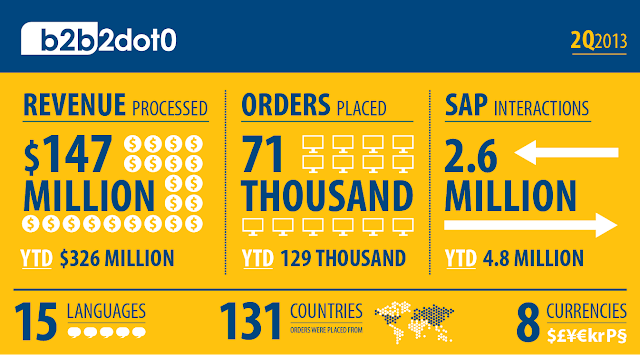History of E-Commerce
Doing trading something over the internet is simply called as electronic commerce, shortly e-commerce or eCommerce. The technology of e-commerce goes back to the 1979 when Micheal Aldrich introduced first online shopping system. Then Tim Berners-Lee used NeXT computer to create first web browsers and called it World Wide Web (www). When we came to 1995, the first e-commerce website amazon.com was launched by Jeff Bezos and later on the same year, ebay.com was launched by Pierre Omidyar. If we look at what happened this year, according to the b2b2dot0 which has gained this information from SAP-integrated eCommerce solution, for the 2nd quarter of 2013 the revenue is 147 Million dollars and 326 Million for 1st and 2nd quarters in total for only B2B market. According to the Forrester study prediction about 2013, 559 Million dollars for B2B market and 252 Million dollars for B2C market will be released.
Type of E-Commerce
There are many types of selling or buying activities over internet. Commonly people understand from the e-commerce as customer uses a website of a seller and buying something. This kind of e-commerce is related to customer and seller, or business, so it is called as business-to-consumer e-commerce model or shortly B2C. There are many examples for this kind of e-commerce, such as www.amazon.com, www.bestbuy.com, hwww.shopbop.com. If the business sells product to business, generally big wholesaler sells the product another dealer, this kind of e-commerce is called as business-to-business or B2B. This kind of e-commerce is used for supply chain management. For example www.alibaba.com, www.busytrade.com, www.made-in-china.com are very famious B2B e-commerce sites. According to the A.Koponen, B2B market is growing faster than B2B market and %80 of the e-commerce is B2B. Consumers also sell his products or goods directly to another consumer, this kind of e-commerce is called as consumer-to-consumer, or C2C. Generally auction website like www.ebay.com, www.ltainenporssi.fi, www.sahibinden.com are this kind of e-commerce. In developed countries doing governmental issues, like taxes procedures can followed by internet, or accessing government database for someone’s credibility status online by a private bank, are a kind of e-commerce and called as business-to-government e-commerce, or B2G. By use of mobile devices, generally smart phones, are getting widen, there has been demand on using mobile devices for daily needs such checking weather, following favourite news, buying or selling units in stock market, playing games, and lots of others. This kind of e-commerce is called as mobile commerce, or shortly m-commerce. This kind of applications can be loaded from the market provided by vendor of the operating system like android by Google, ios store by Apple, appworld by BlackBerry, appstore by Windows. Some studies shows that the next-big thing will be m-commerce, according to the prnewswire, in 2013, there will be 251 Billion mobile transaction and there will be competition to take part of m-commercing by the firms.
What About Testing E-commerce Sites
Since there has been increasing demand of trading online, the number of any kind of e-commerce application is in trend of increase. Therefore the competency among the e-commerce firms is very hot and this shape their vision to release new features to the market and quality policy. Releasing quality product is important but releasing quality product to market on time is very important so time-to-market is another important attribute for competition.
The next post will be related to testing e-commerce application effectively and efficiently.

